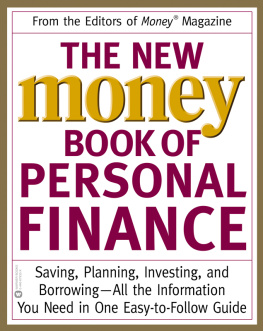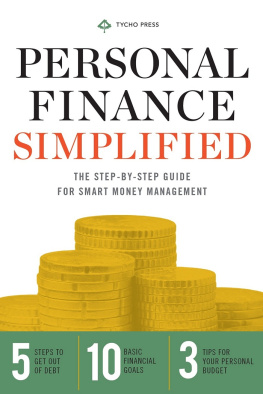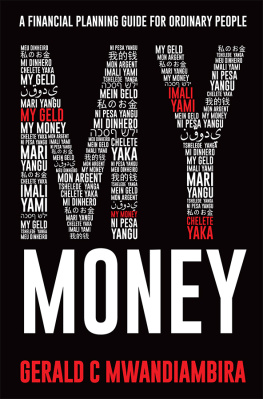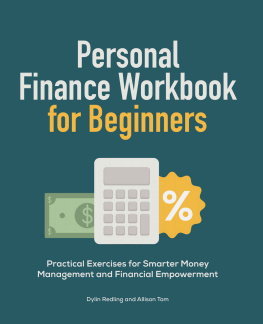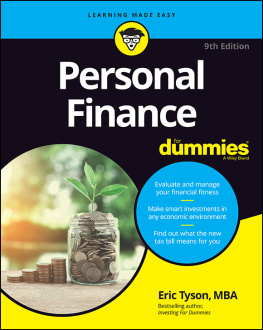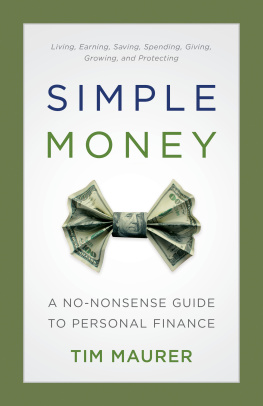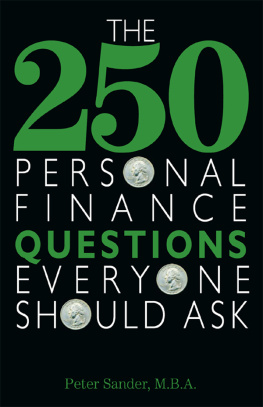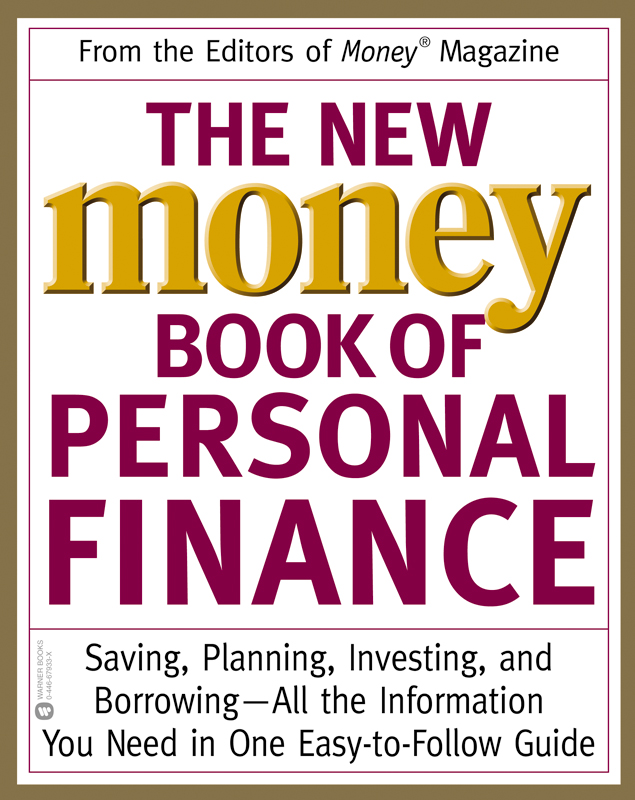This publication is designed to provide competent and reliable information regarding the subject matter covered. However, it is sold with the understanding that the author and publisher are not engaged in rendering legal, financial, or other professional advice. Laws and practices often vary from state to state and if legal or other expert assistance is required, the services of a professional should be sought. The author and publisher specifically disclaim any liability that is incurred from the use or application of the contents of this book.
Copyright 1996, 2002 by MONEY Magazine
All rights reserved.
Warner Books, Inc., Hachette Book Group, 237 Park Avenue, New York, NY 10017
Visit our Web site at www.HachetteBookGroup.com
An AOL Time Warner Company
First eBook Edition: November 2008
ISBN: 978-0-446-55487-9
Book design and text composition by L&G McRee
OTHER BOOKS IN THE
money AMERICA'S FINANCIAL ADVISOR SERIES:
How to Retire Young and Rich
401(k): Take Charge of Your Life
Paying for Your Child's College Education
The Right Way to Invest in Mutual Funds
Dollar Pinching: A Consumer's Guide to Smart Spending
Starting Over; How to Change Careers or Start Your Own Business
Car Shopping Made Easy: Buying or Leasing, New or Used
Michael Sivy's Rules of Investing
Your Dream Home: A Comprehensive Guide to Buying a House, Condo, or Co-op
How to Start a Successful Home Business
Updating a personal finance and investing book as comprehensive as this one is a much more complicated and time-consuming project than I had ever imagined. Although new laws and the Internet have transformed the world of personal finance and investing, the foundation of wealth-building advice and strategies found throughout the original version of this book, The MONEY Book of Personal Finance, are still sound today. My hats off to the team of MONEY editors and writers who produced the original version of this book in 1996 (and the revised edition in 1998) under the adroit leadership of the former MONEY executive editor Richard Eisenberg.
I extend my sincere gratitude and special thanks to a team of dedicated editors, writers, reporters, art directors, and freelance journalists whose tireless efforts have helped me incorporate the 2001 tax laws and rules, a slew of new investing and money management strategies, a wide range of resources, and most importantly, the powerful research tools and financial found on the Internet into The New MONEY Book of Personal Finance: They are: Syndi Becker, Andrew Feinberg, Judy Feldman, Karen Hube, Tare Kalwarski, Roberta Kirwan, Derek Manson, Cara M. Moultrup, Maryann Salvato, Michael Sivy, Walter Updegrave, and Jason Zweig.
In addition, I would like to acknowledge the following MONEY staffers whose reporting, writing, and editing help form some of the new advice, worksheets, tables, and resource boxes found throughout this revised edition: Aravind Adiga, Marion Asnes, Andrea Bennett, Jon Birger, Joan Caplin, Peter Carbonara, Adrienne Carter, Jean Sherman Chatzky, Brian L. Clark, Glen Coleman, Amy Feldman, Jim Frederick, David Futrelle, Pablo Galarza, Erica Garcia, Leslie Haggin Geary, Eric Gelman, Jon Gertner, Lisa Gibbs, Maya Jackson, Walecia Konrad, Ken Kurson, Laura Lallos, Jeanne Lee, Denise B. Martin, Scott Medintz, Jeff Nash, Nick Pachetti, Ilana Polyak, Michael J. Powe, Stephanie D. Smith, Ellen Stark, Penelope Wang, Cybele Weisser, Amy Wilson, and Suzanne Woolley.
This book would not be a reality without the Warner Books team of Rick Wolff, Dan Ambrosio and Penina Sacks and MONEY's vice president of business development Andrew Schultz. Thank you for your patience.
And finally, many thanks to MONEY's managing editor Robert Safian for giving me the time, the team, and the support to complete this project.
Sheryl Hilliard Tucker
Executive Editor, MONEY
GETTING STARTED
How Are You Doing?
T aking control of your finances. The very sound of it delivers a jolt of self-confindence. Once you're in control of your finances, after all, you can do what it takes to reach your most important money goals. But don't be in a hurry. Many people mistakenly think that the way to become financially independent is to plunge into stocks or mutual funds and hope for some winners. Actually, the secret to financial success is educating yourself about all the key areas of personal financefrom taxes to investing to debt management to estate planningand then taking the right steps in each.
Before you make any moves to improve your financial lot in life, you need to know how you're doing currently. By putting down on paper the true numbers representing your financesyour assets, your liabilities, and your net wortyyou'll see where you need to get started improving your situation.
Determining Your Assets, Liabilities, and Net Worth
So, do you know how you're doing, really? Chances are, you have a vague notion. For instance, you may be pretty cartain that your debts are higher than they ought to be. Or that you could be investing a bit more. Perhaps you've been squirreling away money for years and have amassed a substantial amount. By filling in the following worksheets, you'll know for sure.
Sizing yourself up means looking at three important financial indicators: your assets, your liabilities, and your net worth.Your assets are all the things you own: the money you have in the bank, your furniture, your home, your investments. Your liabilities are the debts you owe. Your net worth is what you get when you subtract your liabilities from your assets. In some cases, particularly if you are young and haven't accumulated much yet, your net worth is a negative figure.
Complete the following Calculate Your Net Worth Worksheet and you'll learn exactly how much you have in assets and liabilities and, ultimately, your current net worth. To fill in the blanks, you will need to pull together your financial records. This could take a few hours, and admittedly, it's not a lot of fun to do. Once you've completed the exercise, however, you'll have all the data you need to help you make some important calculations, such as the amount you'll need to save and invest to retire comfortably or to send your children to college. What's more, you'll be able to tell which types of assets you should build up and which types of liabilities you should whittle down. You'll learn more about investing and debt management later in the book.
CALCULATE YOUR NET WORTY
Pull out your financial statements to fill in the current market value of your assets and the amount of your liabilities in the spaces provided. Complete this exercise at least once a year to track how much your wealth is growing.
Your Assets: To tote up your assets, first collect all you year-end bank, brokerage, mutual fund, mortgage, and employee benefits statements.
Your Debts and Net Worth: Now you're ready to figure out what you owe. What you're paying on all your debts and what you're truly worth. Get out December 31 statements for all mortgages, loans, and revolving credit cards. Add up their outstanding balances, subtract that amount from your Total Assets, and you will get your net worth. You can make your net worth grow by controlling your spending, reducing your debts, and increasing savings and investments.


